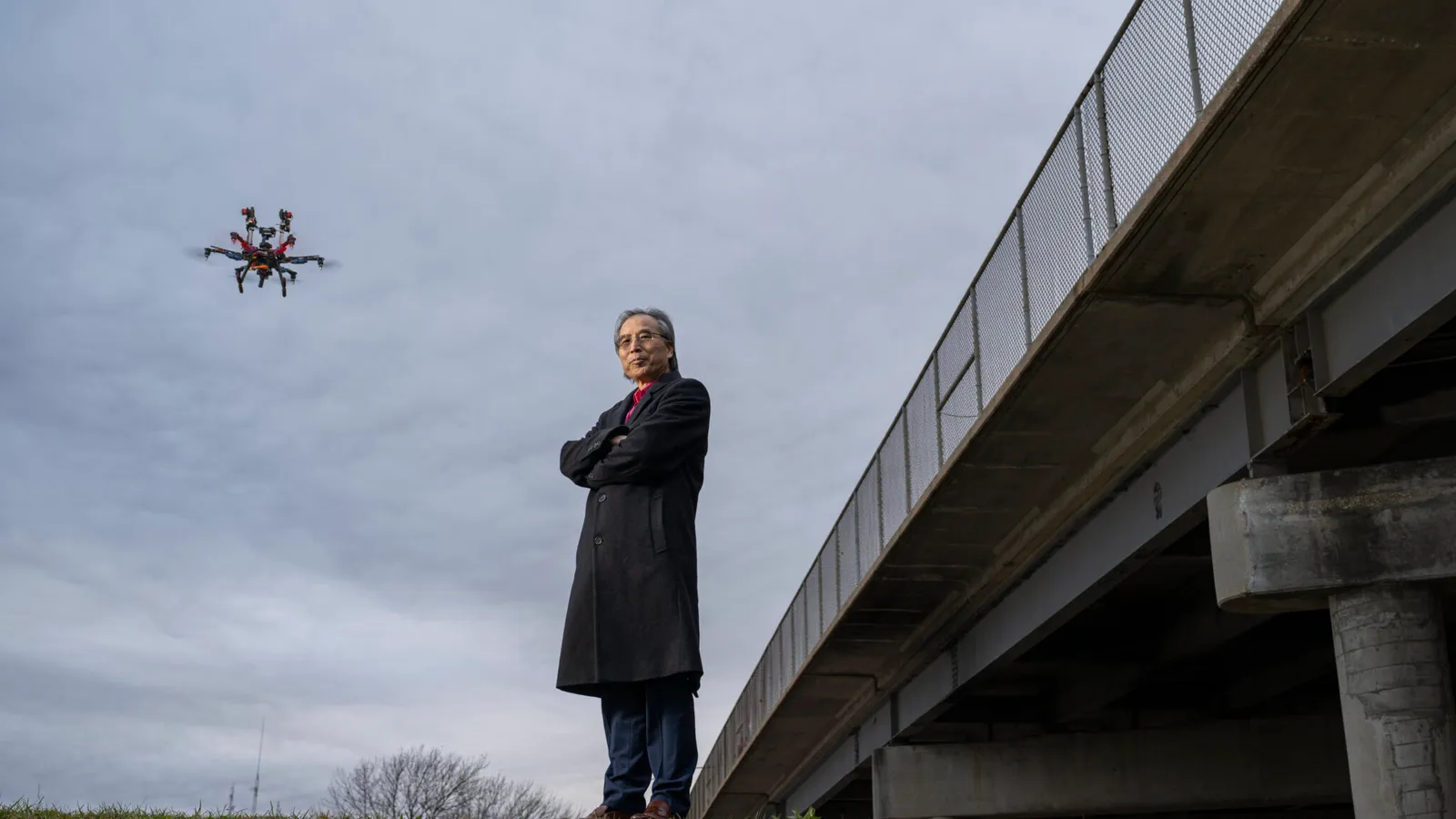Have a story idea
Have a story idea? Send it to us here.

Source : Courtesy of Missouri S&T
March 14, 2025
Author : Alex Bustillos
Missouri University of Science and Technology has released an innovative robotic system designed to revolutionize bridge inspections. The Bridge Inspection Robot Deployment System, or BIRDs, is a drone-based technology that improves safety and efficiency in bridge maintenance.
The project, led by Missouri S&T professor Genda Chen, recently earned the 2025 Charles Pankow Award for Innovation from the American Society of Civil Engineers (ASCE), recognizing its impact on the construction and engineering industries.
BIRDs utilizes three specialized drones that work together to collect and analyze structural data. Each drone plays a distinct role in the process. The first drone is equipped with infrared cameras and LiDAR to scan bridge girders for potential defects. The second drone deploys a small crawler that resembles a miniature bicycle, designed to examine steel components with high-powered microscopes and crack probes. The third drone is fitted with a manipulator arm, enabling it to conduct maintenance and structural testing on concrete surfaces.
Traditional bridge inspections are often costly, time-consuming, and hazardous for engineers who must tackle challenging environments to assess structural integrity. Federal regulations require routine inspections, yet the vast number of bridges in the U.S. poses a logistical challenge. According to Chen, BIRDs addresses these concerns by making the process safer and more efficient. “The inspection data we can retrieve from BIRDs will help tremendously with these issues, ensuring that structures are safe and well-maintained and ultimately lowering their life-cycle costs,” he said in a news release.
The BIRDs project began in 2019 and has received more than $1 million in funding from the U.S. Department of Transportation’s University Transportation Centers Program, along with additional matching sources. The system was designed to be adaptable for use by state transportation departments and private infrastructure companies seeking to improve inspection procedures.
Missouri S&T’s Center for Intelligent Infrastructure, which Chen directs, played a significant role in advancing this technology. Chen has worked with a team of experts across different fields, including bridge engineers and computer scientists, to refine the system for real-world applications. His collaborators include engineers from the Georgia Department of Transportation (DOT), Missouri DOT, and Nevada DOT, as well as researchers from the University of Nevada, Reno, and Georgia Institute of Technology.
Drones have increasingly become valuable tools for infrastructure inspection, but BIRDs takes the concept a step further by integrating multiple drones with advanced data collection capabilities. The use of LiDAR and infrared imaging allows the drones to detect cracks, corrosion, and other defects that might not be visible to the naked eye. The system also enables inspectors to monitor bridges remotely, reducing the need for physical inspections that often require lane closures and specialized equipment.
By automating parts of the inspection process, BIRDs is expected to lower maintenance costs and extend the lifespan of bridges. The ability to deploy drones in hard-to-reach areas means fewer human workers will have to put themselves at risk to assess aging structures. This technology aligns with a broader trend in the transportation industry toward using robotics and artificial intelligence to improve infrastructure management.
Following its successful development, Chen and his team plan to continue testing and refining the BIRDs system. The goal is to secure partnerships with federal agencies, state DOTs, and private companies to facilitate broader adoption. While the system is primarily designed for bridge inspections, its technology could potentially be applied to other infrastructure projects, such as monitoring tunnels, overpasses, and high-rise structures.
Chen has been at the forefront of developing advanced inspection technologies. In September 2024, he patented a system capable of detecting tiny movements in composite materials to prevent structural failures. His ongoing research focuses on using robotics and AI to improve infrastructure safety.
The Charles Pankow Award for Innovation is presented annually by ASCE to recognize groundbreaking advancements in the engineering and construction industries. BIRDs was selected for its ability to improve efficiency and accuracy in bridge inspections while reducing risks for workers.
With systems like BIRDs, state and federal agencies have new tools to ensure the safety and longevity of critical transportation networks.
Category : Investment in Infrastructure Mobile Technology Tech Bridges
